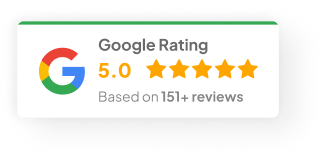18 Jun 25
BigCommerce or WooCommerce: Which Will Maximize Your E-Commerce Potential?
Picking an e-commerce platform isn’t just a checkbox on your to-do list. It’s one of those decisions that quietly shapes everything—your store’s future, your stress levels, your bottom line. We’ve seen too many folks get stuck with the wrong setup because they rushed it or listened to the loudest voice on Reddit.
Let’s talk real for a second. WooCommerce and BigCommerce are two of the biggest names in the game. But they’re not interchangeable. One gives you control (and headaches), the other gives you speed (but fewer knobs to turn). So, which one’s right for your business?
Let me break this down.
TL;DR
- WooCommerce = more control, more complexity
- BigCommerce = less control, more convenience
- Budget, technical resources, and growth plans should guide the choice
- Don’t default to a platform based on popularity—evaluate based on real needs
Why You Want to Choose the Right E-commerce Platform
The platform running an online store becomes the backbone of the business. It’s responsible for far more than just product pages and checkout buttons.
Consider how much it affects:
- Customer experience – speed, layout, mobile-friendliness, and trust signals
- Ease of use – less time clicking around the backend means more time selling
- Built-in marketing & SEO tools – crucial for driving organic growth
- Scalability – the ability to handle more SKUs, orders, and traffic as growth happens
- Security – a must when handling payment and personal data
Again, a solid platform removes friction. A mismatched one creates bottlenecks.
Let’s take a closer look at how WooCommerce and BigCommerce compare.
WooCommerce
WooCommerce is the go-to for anyone deep in the WordPress ecosystem. It powers over 6.6 million or 38.74% of online stores worldwide—and for good reason. If a site’s already running on WordPress, WooCommerce can slot right in and turn it into a fully functioning storefront.
It offers serious flexibility. Think endless themes, plugins for every niche imaginable, and custom development that can shape the store into anything. It’s great for businesses where content marketing and SEO are front and center.
But here’s the thing: this freedom comes with strings.
What Works Well
- Total freedom to customize design, checkout flow, and functionality
- No limits on products, variants, or categories
- Excellent SEO setup thanks to the WordPress foundation
- Integrates easily with blogging and content tools
- Massive community—if a problem comes up, someone’s solved it before
What to Watch Out For
- Needs regular updates and maintenance (it’s not set-and-forget)
- Performance lives or dies based on the quality of hosting
- Some premium plugins stack up cost-wise fast
- Updates can break stuff, especially when plugins don’t play nice
Pricing
WooCommerce itself is free. But “free” can be misleading. Here’s what usually goes into a setup:
- Hosting: $10–$30/month (go higher for better performance)
- Domain: standard yearly fee
- Premium themes: $50–$100 one-time or subscription-based
- Plugins: free ones exist, but premium tools for SEO, security, and speed add up
- Developer time: depends on how custom the store needs to be
Best Fit For
- Brands already on WordPress
- Teams who want full design and development control
- Businesses built around blogging or long-form content
- Users who aren’t scared of a little technical upkeep
What Users Actually Say
Most WooCommerce users love how customizable it is, especially paired with a strong content strategy. But they also warn that you have to keep things updated. A few skipped plugin updates and ran into broken checkout pages before peak sales periods. It’s flexible, but it needs effort. Visit this link to check out more reviews about WooCommerce.
BigCommerce: Less Hassle, Faster Launch, Built for Scaling
BigCommerce flips the script. It’s a fully managed platform—no hosting setup, no patching plugins, no server crashes during a big promo. Everything’s under one roof, and it just works.
Right out of the box, BigCommerce comes with essential features: mobile-responsive themes, SEO tools, payment integrations, product filters, even abandoned cart recovery. And it plays really well with other sales channels—Amazon, TikTok, Facebook Shops, you name it.
It’s not as open-ended as WooCommerce, but that’s also kind of the point.
Why It’s a Solid Pick
- Hosting and security are baked in—no need to manage servers
- Tons of built-in features without installing a hundred apps
- Scales easily without performance dips
- Regular updates happen automatically, no action required
- Solid support team that actually responds
A Few Trade-Offs
- Less flexible if you want to build something wild or hyper-unique
- Blog/content features aren’t as strong as WordPress
- Some features are locked behind higher-tier plans
- App marketplace isn’t as deep as WooCommerce’s plugin library
Pricing
- Standard: $39/month
- Plus: $105/month
- Pro: $399/month
- Enterprise: Custom quote
Good news: no transaction fees on their end. But payment processors like Stripe or PayPal still take their usual cut.
You can visit their official website for full pricing and features.
NOTE: Pricing as per June 2025
Best Fit For
- Sellers who want an easy-to-manage store
- Fast-growing brands that need reliability at scale
- Teams that prefer built-in tools over custom development
- Businesses more focused on product than content
What Users Actually Say
BigCommerce earns points for stability and simplicity. Store owners love launching without touching code, and customer support gets frequent shout-outs. Some wish they had more design control, but for most, the trade-off is worth it. Visit this link to check out more reviews about BigCommerce.
Overview: WooCommerce vs. BigCommerce at a Glance
|
Feature |
WooCommerce |
BigCommerce |
|
Hosting |
Self-hosted |
Hosted (included) |
|
Customization |
High (developer-friendly) |
Moderate (template-based) |
|
Ease of Use |
Steeper learning curve |
User-friendly, no coding required |
|
SEO |
Excellent (via WordPress) |
Great built-in SEO tools |
|
Performance |
Depends on host |
Fast and optimized |
|
Ideal User |
Advanced users & developers |
Business owners without tech skills |
|
Cost |
Variable |
Fixed monthly pricing |
|
Scalability |
Flexible, requires setup |
Built-in scalability |
Alternative Ecommerce Platforms to Consider
Sometimes neither of the “big two” quite fit. That’s fine. There are other solid options out there that might actually suit your business better—especially if you’re looking for something either simpler or more robust.
Here are two platforms worth checking out:
1) Shopify
Shopify is the go-to for a reason. It’s fast to set up, super clean on the design side, and doesn’t require much (if any) technical knowledge to get rolling.
For new sellers, small brands, or anyone who just wants to get selling without drowning in dev work, this one’s hard to beat.
What stands out:
- Drag-and-drop builder makes building pages easy, even for non-tech folks
- Shopify Payments is built-in, so you don’t need to juggle third-party gateways
- Huge app marketplace—tons of tools to expand your store
- Solid mobile themes out of the box
- Multi-channel selling on Amazon, Instagram, Facebook, etc.
- 24/7 live chat and phone support when something breaks at 2am
Read the full WooCommerce vs. Shopify comparison.
2) Magento (Now Adobe Commerce)
Magento isn’t for everyone. But for big teams and enterprise brands? It’s a beast—in a good way. This is the platform that does everything… as long as there’s a dev team (or agency) to back it up.
Perfect for companies with large product catalogs, advanced workflows, or custom requirements that other platforms can’t handle.
Why it’s powerful:
- Open-source, so there’s endless customization (if you have the resources)
- Handles complex product types and large inventories with ease
- Great for B2B—custom pricing, account portals, purchase orders
- Scales well with high traffic
- Integrates tightly with Adobe Experience Cloud for deeper marketing and personalization
- Full suite of SEO and analytics tools built in
Check out the full BigCommerce vs. Magento platform breakdown.
Conclusion
If full control and customization top your list—and there’s either technical know-how in-house or a reliable dev on call—WooCommerce can absolutely deliver.
But if simplicity, speed, and scalability sound more like what the business needs right now, BigCommerce might save a lot of time and trouble in the long run.
At the end of the day, it’s not about picking the “best” platform. It’s about picking the right one for where the business is today—and where it’s heading.
How Chromatix Can Help Build Your Online Store
Still unsure which platform fits best? At Chromatix, a web design agency in Melbourne, the team’s built and refined hundreds of stores on both WooCommerce and Shopify from scratch builds to complex migrations.
Whether you’re after full customization or a fast, streamlined setup, there’s a tailored solution that’ll actually move the needle, not just look pretty.
Ready to launch or level up your e-commerce store? Let’s chat about what you need.


